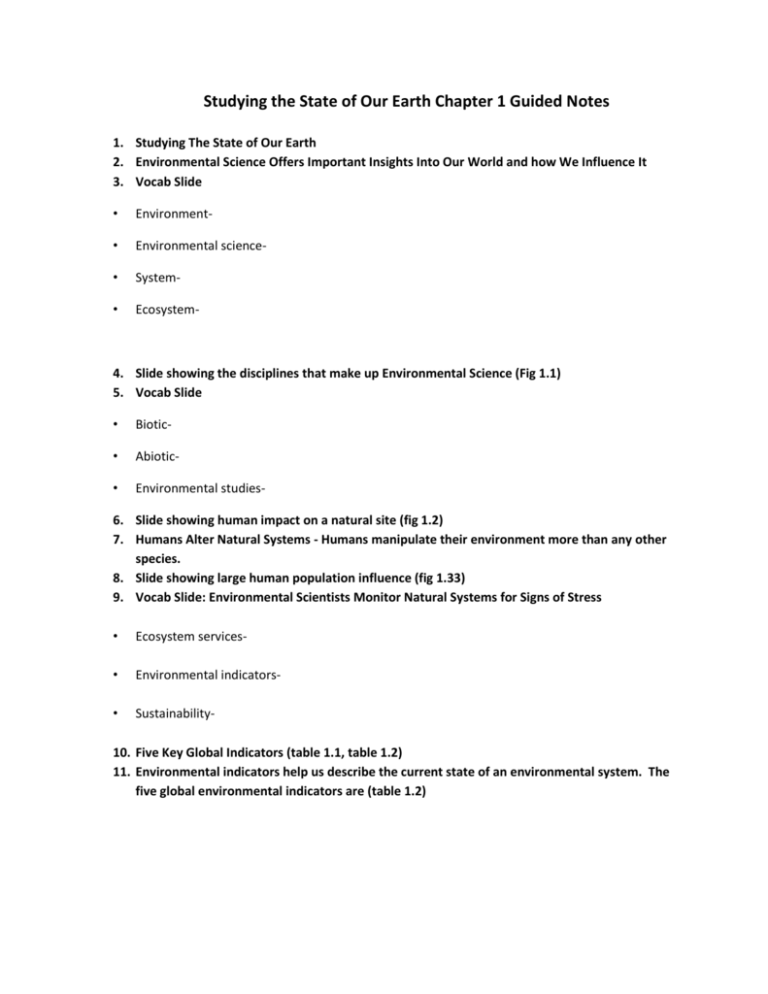APES U1 chapter 1 guided notes
advertisement

Studying the State of Our Earth Chapter 1 Guided Notes 1. Studying The State of Our Earth 2. Environmental Science Offers Important Insights Into Our World and how We Influence It 3. Vocab Slide • Environment- • Environmental science- • System- • Ecosystem- 4. Slide showing the disciplines that make up Environmental Science (Fig 1.1) 5. Vocab Slide • Biotic- • Abiotic- • Environmental studies- 6. Slide showing human impact on a natural site (fig 1.2) 7. Humans Alter Natural Systems - Humans manipulate their environment more than any other species. 8. Slide showing large human population influence (fig 1.33) 9. Vocab Slide: Environmental Scientists Monitor Natural Systems for Signs of Stress • Ecosystem services- • Environmental indicators- • Sustainability- 10. Five Key Global Indicators (table 1.1, table 1.2) 11. Environmental indicators help us describe the current state of an environmental system. The five global environmental indicators are (table 1.2) 12. Biological Diversity 13. Genetic Diversity 14. Picture of Diversity in animals (fig 1.4) 15. Ecosystem Diversity 16. Food Production (fig 1.6) 17. Average Global Surface Temperatures and Carbon Dioxide Concentrations • Greenhouse gases- • • The most important greenhouse gas is carbon dioxide. Anthropogenic- 18. Diagrams of global warming (fig 1.7, 1.8) 19. Human Population growth facts: 20. Picture of dense human population (fig 1.9) 21. Resource Depletion Issues 22. Resource depletion (continued with Fig 1.10) Development – 23. Picture of Easter Island (an example of depletion of resources fig 1.11) 24. Human Well-Being Depends on Sustainable Practices Sustainable development – 25. Slide on sustainable activity (fig 1.12) 26. Human Well-Being Depends on Sustainable Practices In order to live sustainably: 27. Defining Human Needs Basic human needs are 28. The Ecological Footprint (including fig 1.14) An ecological foot print is 29. Comparing the average world footprint and the U.S. footprint (fig 1.15) 30. Science is a Process (fig 1.16) Observations and questions Hypothesis Collecting data Interpreting results (inductive and deductive reasoning) Disseminating findings 31. Picture of the concept of accuracy and precision (fig 1.17) 32. Comparing laws and theories TheoryNatural law33. Controlled Experiments and Natural Experiments Controlled experiments – Natural Experiments 34. Experimental Science Presents Unique Challenges








